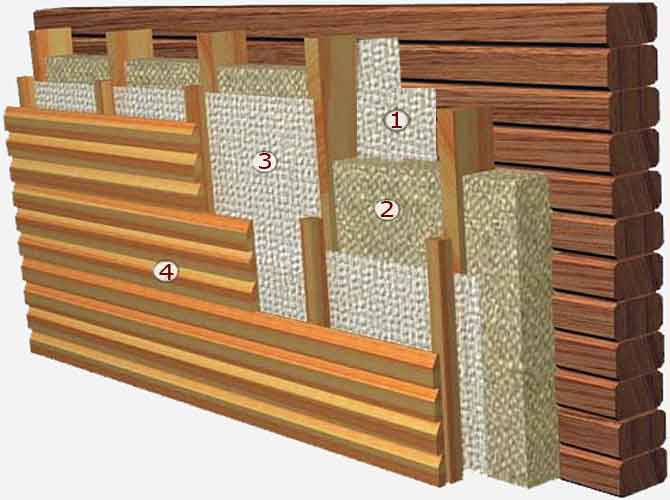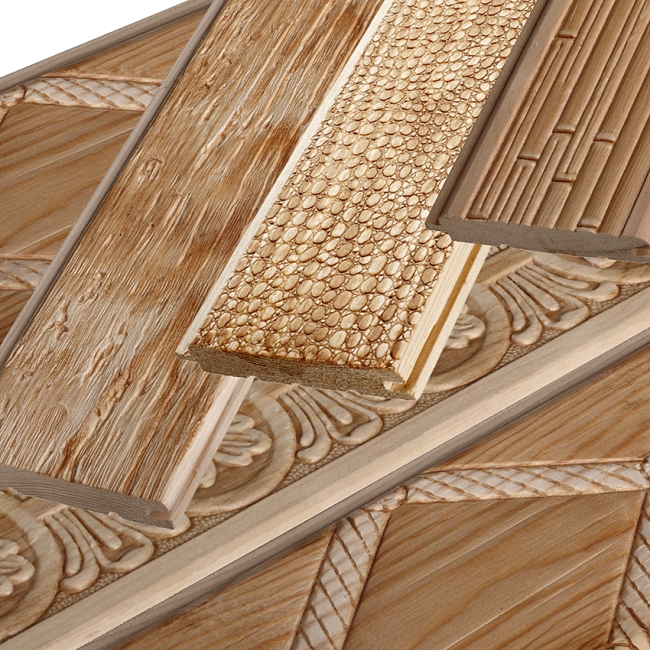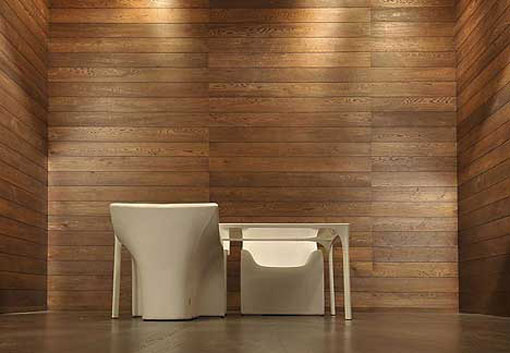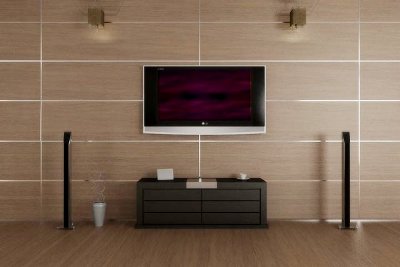Due to the abundance of finishing materials on the construction market, when selecting a coating, one can take into account not only the price and practicality, but also its environmental friendliness, ease of installation, and the possibility of decorating the interior in this or that style. Therefore, when repairing apartments and houses, wooden wall finishing is increasingly performed.
This solution will make the premises not only beautiful and stylish, but also create a favorable microclimate in them. Next we will consider the existing types of wooden finishing materials and their features.
Types of wooden finishes
So, if you decide to do it, you first need to carefully study all the possible options for wood coatings.
To date, the most popular materials are:
- Lining;
- Natural wood wallpaper;
- Panels from valuable breeds of wood.
All these wooden finishing materials have their pros and cons, which should be considered when choosing.

Wall decoration with lining
The most budgetary option for finishing is the cladding of the walls with the lining. This material is a decorative facing board.
It is most often made of the following types of wood:
- Oak;
- Pines;
- Aspen;
- Larches;
- Cedar;
- Alder and others.

Scheme - finishing of wooden walls from the inside with a heater and lining
The advantages of this cover include not only a low price, but also such moments as:
- Durability.
- Ease of installation.
- Resistance to mechanical influences.
- High strength.
- Good sound insulation characteristics.
- The possibility of multiple toning or painting, which allows you to update the interior without much financial expense.
- Simplicity of installation, thanks to which the walls can be decorated with their own hands.
The shortcomings of the material include susceptibility to microorganisms and insects, as well as poor resistance to changes in humidity and temperature.

In fact, this material is a classic lining with all its inherent properties, but made with more advanced technology. Its main feature is the presence of special recesses for ventilation, which protect the finish from condensation and internal stress.
In addition, the lining has deep grooves that provide better installation and eliminate the possibility of slits.
In the process of sorting the material, the following categories are assigned to it:
- "A" - the highest category, which indicates the complete absence of knots.
- "B" - on the surface of the cover there may be knots, but they do not fall out.
- "C" - the lining of this category has the lowest quality, however, it is practically not available for sale and is not used for wall finishing.
Euro-lining costs a little more than a classic lining, but it also looks more attractive.

Another type of decoration decorative board is the blockhouse, which simulates a beam or log. Like a lining,.
The low cost of the product is explained by the technology of its production - the material is obtained by sawing a log into a square. From the inner part of it, boards or timber are produced, and from the outer blanks - blockhouse. Thus, virtually no-waste production is provided, which significantly reduces the cost of materials.
The main advantages of this cover include the following:
- High strength.
- Durability.
- Good sound and heat insulation properties.
- No deformation even after several years of operation.
- Due to impregnation with fire retardants and antiseptics, the blockhouse is not affected by insects and fungi, and is also a fireproof material.
- Extremely simple installation instructions, so that it is not difficult for even an inexperienced builder to finish. Fastening is carried out on the principle of "spike-groove".
Blockhouse, like the previous types of coatings, is made from different types of wood, which is the determining factor of its cost. The cheapest items are fir and pine. I must say that this wood is characterized by the release of resin, which provides natural waterproofing, and also improves the strength characteristics of the material.
Advice! To maintain a healthy indoor climate, it is best to give preference to materials from cedar.
Blockhouse may vary in width:
- Narrow - 80-90 mm;
- Wide - 130-230 mm.
For interior finishing of the house it is better to use a narrow blockhouse, as it will minimize the loss of the area of the room, and for the exterior decoration - a wide one, which accurately imitates the surface of the wall built of logs.

Even more interesting and innovative coating is gusvarblok, which has a huge selection of different profiles. Its main feature is the ability to combine various profiles among themselves, so that you can create truly unique interiors.
Docking is carried out with the help of a company patented connection that does not violate the drawing of the coating. Its installation is also extremely simple and does not require any skills or experience. Finally, it should be said that the gusvarblok is endowed with the same advantages as the lining, the blockhouse and the lining.

Natural wood wallpaper
This material is a roll of veneer made of noble wood with a thickness of 0.1 to 0.6 mm. To date, the market can find such wallpaper from more than one hundred species of wood, which allows you to choose the most suitable color and texture of the material.
Veneer is pasted onto plain paper, after which it is used as a normal wallpaper. The main feature of this coating, in contrast to the above materials, is the possibility of finishing the radius surfaces.
However, these wallpapers have a number of drawbacks:
- For a long-term preservation of their appearance, the coating should be periodically treated with oil, varnish or wax.
- Can change color under the influence of sunlight. This is especially true of cherry, and holly.
- Cover swells when water hits, for example, if you are flooded by neighbors, then the wallpaper will be spoiled.
- Wooden wallpaper is quite a fire hazard material.
- May be spoiled by pests and microorganisms.

Decorative wall panels
This finishing material is the most expensive option of all considered above.
This is due to the fact that the panels are made of solid wood:
- Oak;
- Cedar;
- Alder;
- Maple.
Such panels allow to give the interior respectability and nobility and at the same time emphasize the exquisite taste and success of the owners. It should be noted that in recent years manufacturers have been able to achieve the same effect with much lower costs, using three-layer panels for this.
This material has only the front side of the veneer of expensive wood, and the rest of the cheaper raw materials.
Advice! When choosing wooden panels for a children's room or a bedroom, it is better to give preference to a waxed coating, rather than a varnished one, since in the first case the material is more environmentally friendly.
In addition, there are tinted wall panels made of solid pine. They also have a noble hue and a beautiful texture, but they are also relatively cheap.
Conclusion
The modern market offers a large selection of finishing materials made of wood. Some of them are very expensive, intended for elite houses, and some are available to almost everyone ().
However, regardless of the type of material and its price, wood will make your home more cozy and eco-friendly. For more information on this topic, see the video in this article.
Quite often, when decorating rooms in a country house, the choice falls on the wooden style of decoration.
Usually a tree is associated with nature and health. Due to this it is almost ideal for rooms intended for recreation. At the same time, the tree adds solidity to the room.
At the moment there is a huge variety of finishing materials made of wood, including lining, siding, imitation timber, block house and others.
Very important is the fact that the wood finish is durable enough. Building materials from wood undergo special treatment and impregnation, due to which the wood acquires some additional qualities.
Wood allows you to finish the walls beautifully and quickly, while hiding any irregularities, which are so often inherent in the country houses.
is the most environmentally friendly way of decorating rooms.
With the help of wooden finishing, new wide design possibilities open up. Natural wood can give the villa a special elegant features.
Finishing clapboard - a very convenient way to hide the irregularities of both internal and external surfaces. The lining restores the microclimate, is slightly susceptible to deformation when the humidity changes. Also lining, as well as any wood material has increased sound and heat insulation characteristics.
As a rule, the material for wall sheathing is made from larch, pine and other softwoods. Finishing with high quality wood materials does not rot, it is durable and its surface is easy to process. Often used for plating walls is a board made of larch.
To finish the walls with a tree, extremely well-dried boards should be used, which will not be deformed in the future due to excess moisture. Drying the wood at home can be left for the winter in a room with good ventilation. Beech, birch, hornbeam and pear dry well. Solid rocks dry longer than soft, and conifers last longer than deciduous.
Wood trim is a very convenient solution, but it should be noted that this is expensive and very laborious. Therefore, wooden paneling is often used for interior design of kitchens, verandas and summer rooms. The optimal width of the boards for the inner lining of the premises is 100-120 mm, and the thickness is 18-20. As a rule, the thickness of boards with a relief (decorative) surface of 25-30 millimeters.
The wooden lining is laid on the joint in the joint, or with the help of grooves and ridges (otherwise the connection is a spike-groove). In the first case screws or nails are used for fastening. Their hats will be visible on the front surface. For greater aesthetics, leave the same distance between the hats. If the finishing material has a comb and groove, then it is possible to make the lining so that the nails on the surface of the boards will not be visible.
As a rule, the lining boards are varnished. For external processing, there is a special lacquer. In some cases, the skin is lightly burned with a blowtorch to give more decorativeness.
Always it is necessary in advance to be defined with color. Small rooms can be made visually more voluminous using light colors.
An excellent effect of changing the spatial perception can be achieved, if applied, built-in cabinets, cassettes or protruding profile bars. They help to divide the room into functional areas. Thus. You can get the effect of airiness and ease of space.
The main purpose of country houses and cottages is a psychological rest. Sheathing of walls with wood material will realize your unity with nature.
On the question, what is a staircase, you can shortly answer that this is a very successful combination of an ordinary march and spiral staircase. The latter in this tandem replaces the transitional platform, due to which the place is saved when it is installed. In general, the benefits of a staircase for a house of this design is very much. Firstly, this is a small area for installation. Secondly, convenient movement (in comparison with a spiral staircase). And, thirdly, it is a stylish, attractive, it is even possible to say, a unique and rich appearance. It is about such a product that we will discuss this article from the website stroisovety.org, in which we will understand the peculiarities of the staircase with the steps.
Staircase with zaubezhnymi steps: requirements for manufacturing
Like any other product that a person uses in his life, a staircase with runners must have certain qualities. Correspondence to them and determines the requirements put forward for its design.
- The steps are their width. In its largest part, it should not exceed 400 mm, and in the narrowest 100 mm. It should be understood that going beyond these limits, you will create the prerequisites for uncomfortable movement on the stairs.
- Between turns, on straight sections of the stairs, all steps should have the same width.
- The height of the steps. For easy movement (so that a person does not get over them, and he does not have to lift his leg too high), the step height should be about 120-220 mm.
- The protrusion is the overhang of the upper stage above the lower stage, again, for safety reasons, should not exceed 40 mm.
- A U-shaped ladder, which has two turns, making up 180 degrees. In them, the distance from one march to the second should not be less than a fourth of the width of the steps. Otherwise, it turns out inconsistency in the height of the steps - you will get steps less than 100mm high, which violates the technical requirements that determine the convenience and safety of movement on the stairs.
